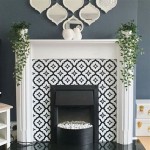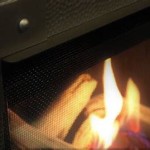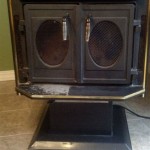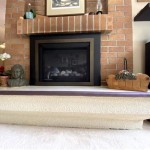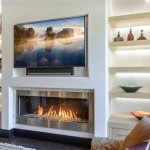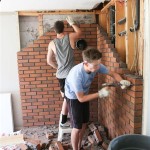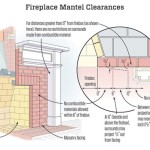The Heart of the Fireplace: Understanding the Firebox
A wood-burning fireplace is a cherished feature in many homes, adding warmth, ambiance, and a touch of rustic charm. At the core of this cozy experience lies the firebox, a crucial component that plays a significant role in both the functionality and aesthetics of the fireplace. Understanding the firebox, its design, and its importance is key to enjoying a safe, efficient, and visually appealing fireplace experience.
The Structure and Features of a Firebox
The firebox is essentially the enclosed chamber where the fire is built and burns. It is typically constructed from heat-resistant materials like cast iron, steel, or brick. Key features of a firebox include:
- Hearth: The solid floor of the firebox where the fire rests. It often extends outward to create a raised platform.
- Fireback: A large, often decorative metal plate placed at the back of the firebox to reflect heat and prevent the back wall from overheating.
- Damper: A movable plate or door located near the top of the firebox that controls the draft and airflow. It regulates the intensity of the fire and helps control smoke flow.
- Lintel: The horizontal stone, brick, or beam above the opening of the firebox that supports the weight of the fireplace structure.
- Sides and Front: These encompass the firebox and are often made of brick, stone, or metal. They help contain the fire and direct the heat.
The Role of the Firebox in Fireplace Performance
The firebox plays a vital role in determining the efficiency, safety, and effectiveness of a wood-burning fireplace. Its design and construction directly impact:
- Heat Output: The size, shape, and materials of the firebox influence how much heat is produced and distributed. A larger firebox will generally generate more heat.
- Smoke and Draft Control: The design of the firebox, particularly the damper, plays a crucial role in controlling the flow of smoke and air. A well-designed firebox ensures efficient combustion and minimal smoke.
- Fuel Consumption: The firebox's size and efficiency impact fuel consumption. A properly designed firebox can maximize heat output while reducing the amount of wood needed.
- Safety: The firebox's materials and construction must be strong and heat-resistant to ensure safe operation. It should be built to prevent sparks, embers, and heat from escaping.
Factors to Consider When Choosing a Firebox
When selecting a firebox for a new or existing fireplace, certain factors should be carefully considered:
- Size and Shape: The firebox size should be appropriate for the fireplace opening and the desired heat output. The shape can influence the aesthetics and heat distribution.
- Material: Cast iron fireboxes are known for their durability, while steel fireboxes might be more affordable. Brick fireboxes can add a traditional look.
- Efficiency: Consider the firebox's efficiency rating, which indicates how effectively it burns fuel and generates heat.
- Style: The firebox's style and design should complement the overall aesthetic of the fireplace and the room.
Understanding the firebox is essential for appreciating the complexity and functionality of a wood-burning fireplace. By considering these factors and selecting a well-designed firebox, homeowners can ensure a safe, efficient, and aesthetically pleasing fireplace experience.

Wood Burning Fireplace Inserts 1 Stove Insert Dealer

Why A Wood Burning Fireplace Insert Bethesda Md Service

Napoleon Epi3 Wood Fireplace Insert Inserts By

Wood Inserts We Love Fire

Rais 60 Insert Wood Fireplace For

Ventis Hei240 Wood Burning Insert

Premium Wood Fireplace Inserts Made In Usa Lopi Stoves

What S Best A Fireplace Stove Or Insert We Love Fire

Should I Use A Fireplace Insert Or Wood Stove To Heat Up My Home

T25i Timberwolf Wood Fireplace Insert Hearth Stove Patio
Related Posts

